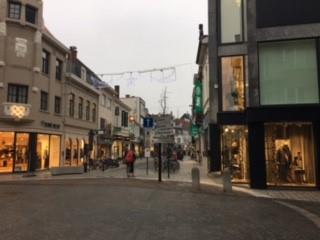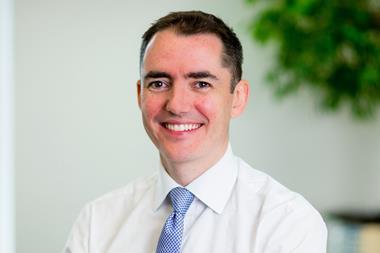British towns should take inspiration from Belgium, where a passionate mayor forced through change to make his city’s high streets fit for the 21st century.
I first became aware of Kris Declercq in 2014.
I’d just given a talk in Ostend and was approached by a group of town centre officials who were eager to give Declercq, the mayor of Roeselare, a copy of my review of the high street.
A year earlier I’d presented this review, which was produced by a team from a variety of disciplines, to a Government minister in Parliament.
“As someone who has spent many years travelling to high streets around the country and meeting people passionate about improving their communities, I was intrigued to see what they had done”
I handed over copies, took a mental note of the mayor’s name, but didn’t expect to hear anything more.
The following year, out of the blue, I received a call from the same town centre officials inviting me to pay Roeselare a visit.
“The mayor has made big changes,” I was told. “He’s implemented your review.”
As someone who has spent many years travelling to high streets around the country and meeting people passionate about improving their communities, I was intrigued to see what they had done.
I’d also not met a politician with this level of commitment to driving change at a local level.
I was so impressed the first time I visited Roeselare in 2015 that I went back again in December 2016, this time as part of a delegation organised by the National Retail Research Knowledge Exchange Centre at Nottingham Business School.

Big changes
Whitehall mandarins, academics, the chief executive of the Association of Convenience Stores and senior figures in local government were among those eager to see the significant changes the mayor has introduced.
Technology has played a big part. He’s rolled out free Wi-Fi across the city centre and they’re introducing smart parking technology to make it easier and less stressful to park.
They have a city app offering loyalty rewards, personalised merchandising and community information. They’ve consolidated the libraries to house them in a new flagship Kenniscentrum (knowledge centre), which combines a traditional library with a technology space, offering training and supporting entrepreneurs with hot-desking facilities.
It also has a ’maker space’, bar/café and a beehive.
The fact that this impressive building is right in the city centre is deliberate, as Declercq is of the view that retail needs to be supported by other drivers – in this case education, entrepreneurship and new technology – to make high streets viable.
“They have consolidated some of the churches to create a fresh food market and there is a big drive to make it family-friendly”
He’s also introduced new green spaces and pedestrianised some areas in a concerted effort to open up the centre, encourage people to walk and cycle and make shopping a much more leisurely and healthy activity.
They have consolidated some of the churches to create a fresh food market and there is a big drive to make it family-friendly.
In stark contrast to the furore generated in the UK over mothers breastfeeding in restaurants and shopping centres, Roeselare’s high streets have mobile breastfeeding facilities welcoming mothers.
There’s a healthy mix of independent shops too, and traders have a reward scheme, providing customers with coins, akin to a local currency that can only be spent in community facilities such as the swimming baths.
The changes are bedding down, but it’s clearly having a positive impact and, like all good high streets, there is a real sense of increased civic pride and community.
Declercq’s high streets face exactly the same problems as many across Britain in that an increasing shift to online shopping is making the old bricks-and-mortar model less relevant by the day.
With the right changes, though, high streets still have a great future. But making this leap remains a significant challenge for many places – and that’s why some of the key lessons I’ve learned are vital to give every high street a chance of survival.
Strong local leadership is needed
Bespoke change that is in keeping with local heritage and community concerns can’t be driven from Whitehall.
It needs a strong local leader to grab the bull by the horns and make change happen.
At a time when high-street footfall has fallen for the third month in a row and the number of shops standing empty for more than 12 months has doubled in the past few years, radical change is urgently needed to arrest decline.
The mayor of Roeselare epitomises what’s needed.
A proper plan is essential
Declercq has introduced a seven-point plan and he has considerable local support to deliver it.
He presented it to 500 people and made them sign a pledge in support of it. It hangs in his office and everyone is clear on the direction of travel and what the mayor is trying to do.
Technology must be embraced for high streets to have a future
Remember Walkmans, fax machines and typewriters? They were ruthlessly cast aside by the pace of change, and large chunks of the high street will be consigned to the dustbin of history if new technology is not embraced.
We’re only scratching the surface of what’s possible at the moment, and while retailers will need fewer stores in the future, technology has the potential to vastly improve the shopping experience.
Devolution must go further to unlock high streets’ true potential
Local democracy in the UK can be baffling and it’s often hard to get things done.
We certainly can’t rely on Westminster to create unique shopping destinations in every community.
We need to break out of an overly centralised way of doing politics and give a new breed of strong local leaders the powers to make the changes their communities are crying out for.
Declercq has successfully used a blend of carrot and stick to start the transformation his high street needs, and I was impressed at the powers he used to fine landlords if they keep shops empty for over a year.
Engagement is key
You have to start with a vision that is worth aiming for – something that captures local people’s imagination and meets unmet community needs.
If that is communicated well enough, you’ll earn the backing of local people.
But you will need strong KPIs in place to track progress, and you’ll need to regularly report back to the community and be transparent about what you’re doing.
Because the best communities are those that are built on trust – and trust has to be continually earned.


























No comments yet